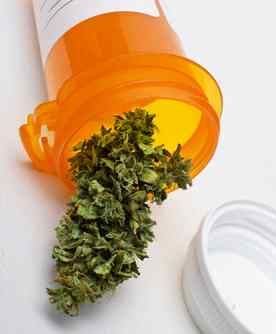- MENU
- HOME
- SEARCH
- WORLD
- MAIN
- AFRICA
- ASIA
- BALKANS
- EUROPE
- LATIN AMERICA
- MIDDLE EAST
- United Kingdom
- United States
- Argentina
- Australia
- Austria
- Benelux
- Brazil
- Canada
- China
- France
- Germany
- Greece
- Hungary
- India
- Indonesia
- Ireland
- Israel
- Italy
- Japan
- Korea
- Mexico
- New Zealand
- Pakistan
- Philippines
- Poland
- Russia
- South Africa
- Spain
- Taiwan
- Turkey
- USA
- BUSINESS
- WEALTH
- STOCKS
- TECH
- HEALTH
- LIFESTYLE
- ENTERTAINMENT
- SPORTS
- RSS
- iHaveNet.com: Health
Megan Johnson

Currently, marijuana is categorized as a controlled substance, yet 14 states and the District of Columbia allow patients to use it for medical purposes
Multiple sclerosis patients can get prescription pot to ease their painful muscle spasms -- if they live in Great Britain, where regulators recently approved a mouth spray made from cannabis, or marijuana.
Don't expect the company will have it easy. As far as the federal government is concerned, marijuana has no place in medicine.
Yet the medical use of marijuana by Americans is spreading. Fourteen states and the District of Columbia allow patients to use marijuana -- and in some states to grow it -- for medical purposes. Shops legally sell medical pot in California, Colorado, and New Mexico. But federal prosecutors continue to target growers, distributors, and users even in states where medical marijuana is legal.
The legal quagmire has hampered research into marijuana's potential medical benefits. Small studies by the
But moving beyond lab rats has been tough. Only a handful of double-blind, placebo-controlled clinical studies -- the gold standard of medical research -- have been done. Those favoring human research say it demands uncommon patience and persistence.
Researchers must be cleared by the
Americans can take synthesized THC, the main psychoactive compound in marijuana, as Marinol, a capsule made by
A dose of Marinol may take three hours to kick in, while smoked marijuana's effects are almost immediate, she says. Smoking the plant, however, may harm the respiratory system and, especially in young heavy users, the brain. Haney, whose research focuses on marijuana dependence, thinks cannabis could have a place in medicine.
"There are clear medical potentials with this plant," she says. "I am not anti-marijuana, I'm not pro-marijuana. I want to understand it." Haney expresses frustration at what she considers wrongheaded efforts by states to legalize medical marijuana. There is too much, she says, that scientists do not know.
Meanwhile, patients like Dan Pope, 45, a Colorado resident with muscular dystrophy, continue their use of medical marijuana. He says it helps control his muscle spasms and makes his pain tolerable. But when he recently went to the
8 FACTS YOU MIGHT NOT KNOW ABOUT MEDICAL MARIJUANA
Marijuana as medicine is nothing new, despite the current groundswell of laws making pot legal for medical uses. Here's a quick fact file on cannabis and its medical history, makeup, and legality"
1. 'Marijuana" is a Mexican term that originally was applied to low-quality tobacco.
2. The plant was cultivated in China for therapy (and recreation) over 4,700 years ago.
3. More than 20 prescription medicines containing marijuana were sold in U.S. pharmacies at the turn of the 20th century. Pot-based medications were commonly available until 1942, when cannabis was stricken from the U.S. Pharmacopeia, the official compendium of drugs considered effective. From 1937 to 1942 the federal government collected a tax of
4. About 17,000 studies on marijuana and its components have been published, according to the
5. The federal government is in the pot-growing business. Under a federal contract, the
6. The plant has nearly 500 chemical compounds, called cannabinoids.
7. Fourteen states and the District of Columbia have legalized medical marijuana: Alaska, California, Colorado, Hawaii, Maine, Michigan, Montana, Nevada, New Jersey, New Mexico, Oregon, Rhode Island, Vermont, and Washington. But patients in these states face federal prosecution for using it -- or for growing or possessing pot for medical purposes.
8. Federal law prohibits physicians from prescribing or otherwise actively supplying patients with the drug. But in 2002 the
Available at Amazon.com:
Foraging New England: Finding, Identifying, and Preparing Edible Wild Foods and Medicinal Plants
Edible Wild Plants: A North American Field Guide to Over 200 Natural Foods
Last Child in the Woods: Saving Our Children From Nature-Deficit Disorder
Copyright © U.S News & World Report. All rights reserved.
AGING | ALTERNATIVE | AILMENTS | DRUGS | FITNESS | GENETICS | CHILDREN'S | MEN'S | WOMEN'S
Health - Medical Claims for Marijauna - Just Blowing Smoke?